By Jessie Quan, LEED AP, RA | Experiential Graphic Designer
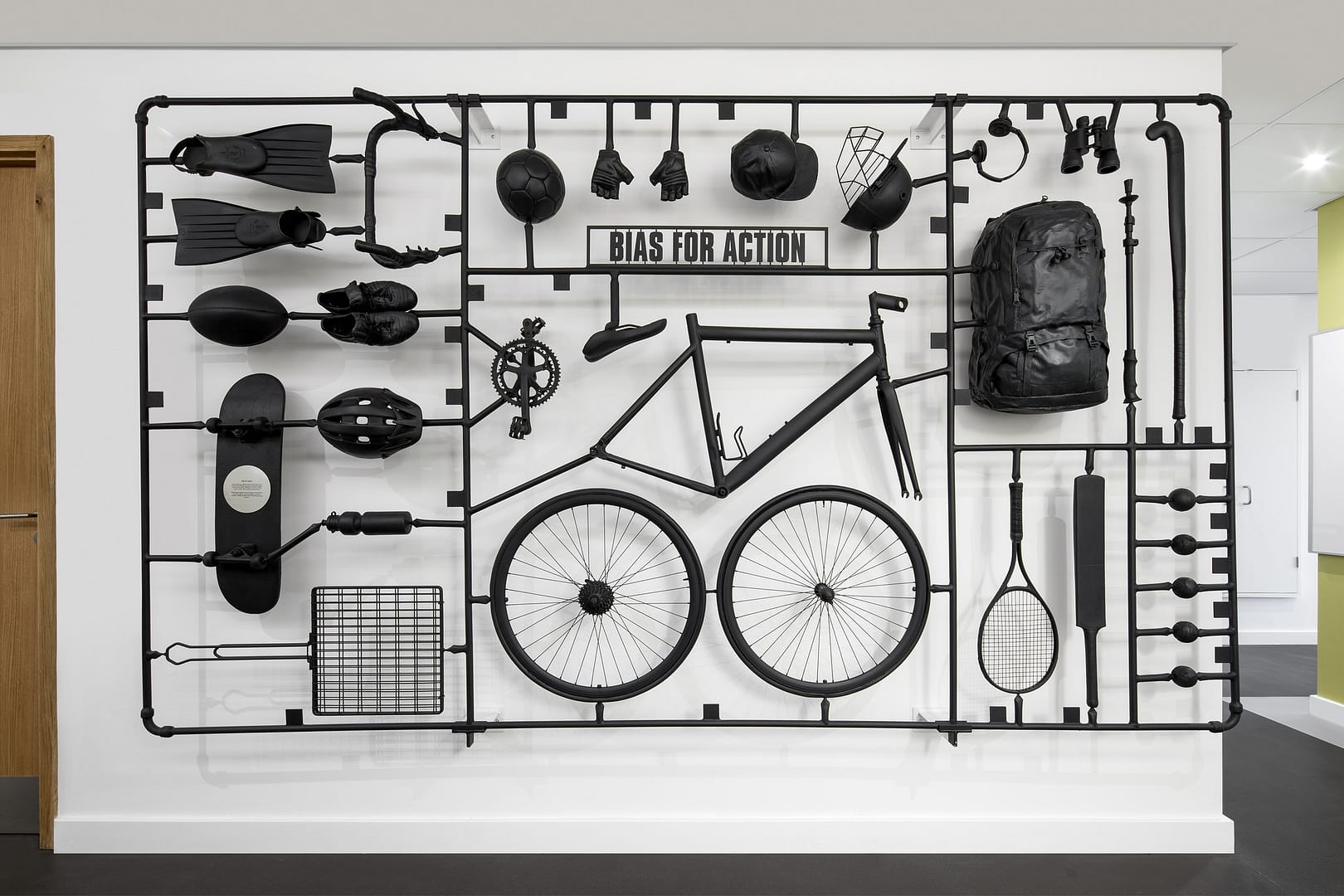
Photography © Adam Letch.
All work and no play makes Jack a dull boy. And dullness leads to boredom and restlessness—none of which is good for Jack or Jack’s employer.
The Bureau of Labor Statistics estimates American workers are spending an average of 8.5 hours a day at work and an additional 2.8 hours of leisure time watching television. With the negative effects of a sedentary lifestyle and increased screen time widely documented, it is important to consider more creative methods of encouraging an active, healthy lifestyle. With so much of our lives spent at the workplace, it is only natural that an emphasis be placed on workplace design to tackle the problem. While game rooms and dedicated lounge areas have become standard fare for some, an unexpected solution may come in the form of a well-integrated experiential graphic design (EGD) approach.
Historically applied to help users navigate the built environment, EGD has evolved into a potent tool for visual storytelling and placemaking. Leveraging graphics to both celebrate and convey a brand, EGD is effective because it can be seamlessly integrated into its environs. While its efficacy in delivering information and visual storytelling is widely understood and appreciated, EGD’s potential to contribute to workplace wellness is lesser known, but now coming to the forefront.
ENCOURAGING MOVEMENT
The inspiration needed to convince employees to be more active can be as simple as an entertaining graphic located at or near a stair. From a simple two-dimensional message reminding people how many more calories they are burning by taking the stairs to a responsive digital stair feature, the options are many. Conversely, placing graphics at the elevator to remind users how many calories they could be burning if they took the stairs might also be an effective tactic. Encouraging the use of stairs is only one way to move towards a less sedentary workplace.
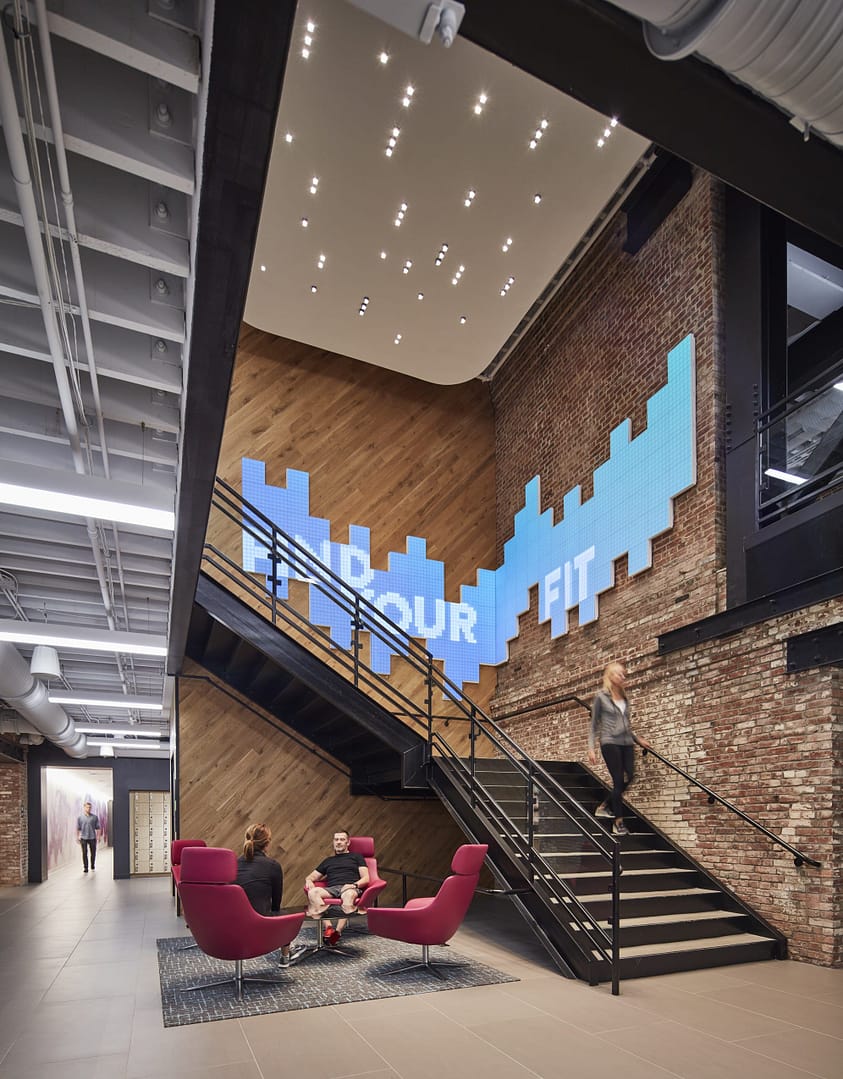
Photo © Tom Harris.
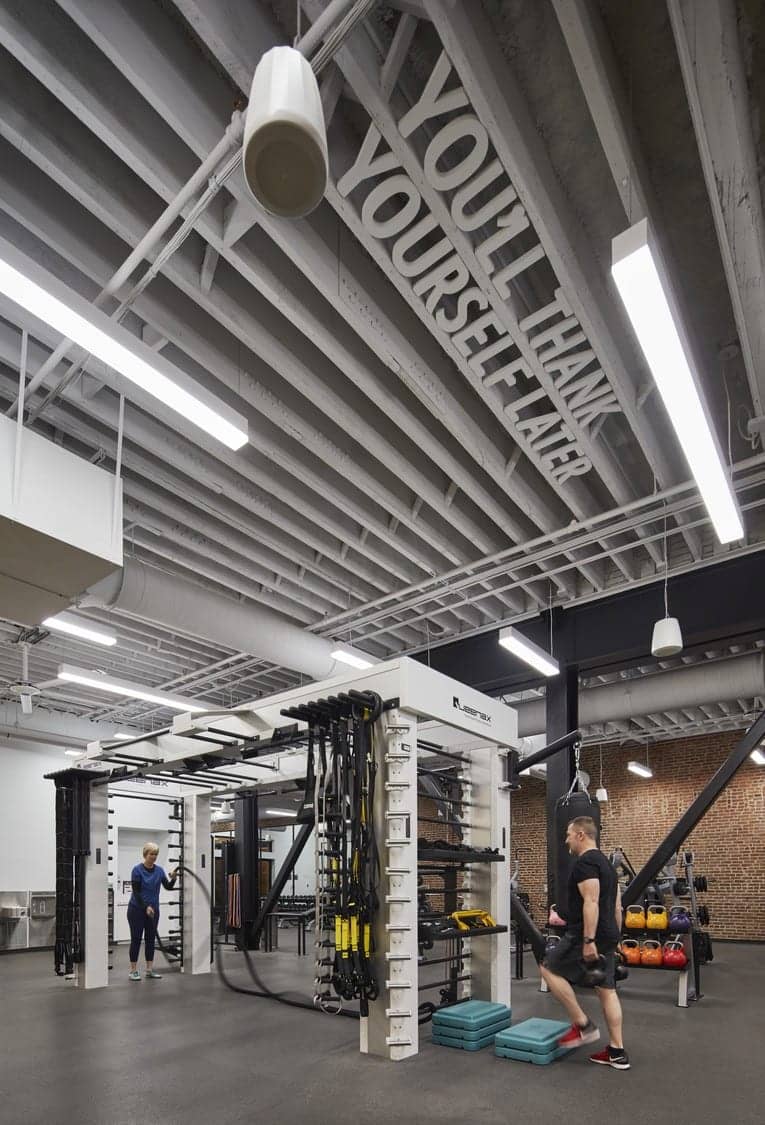
Photo © Tom Harris.
A LITTLE FRIENDLY COMPETITION
Once staff are up and moving, the use of visual cues can lead to organic teambuilding by way of some friendly competition—perhaps a foot race (no running, please) between two distance markers cleverly integrated into the flooring. Or a step-counting competition over the course of a single day or an entire year. Whatever the form of competition, employees are interacting with each other and getting away from their screens.
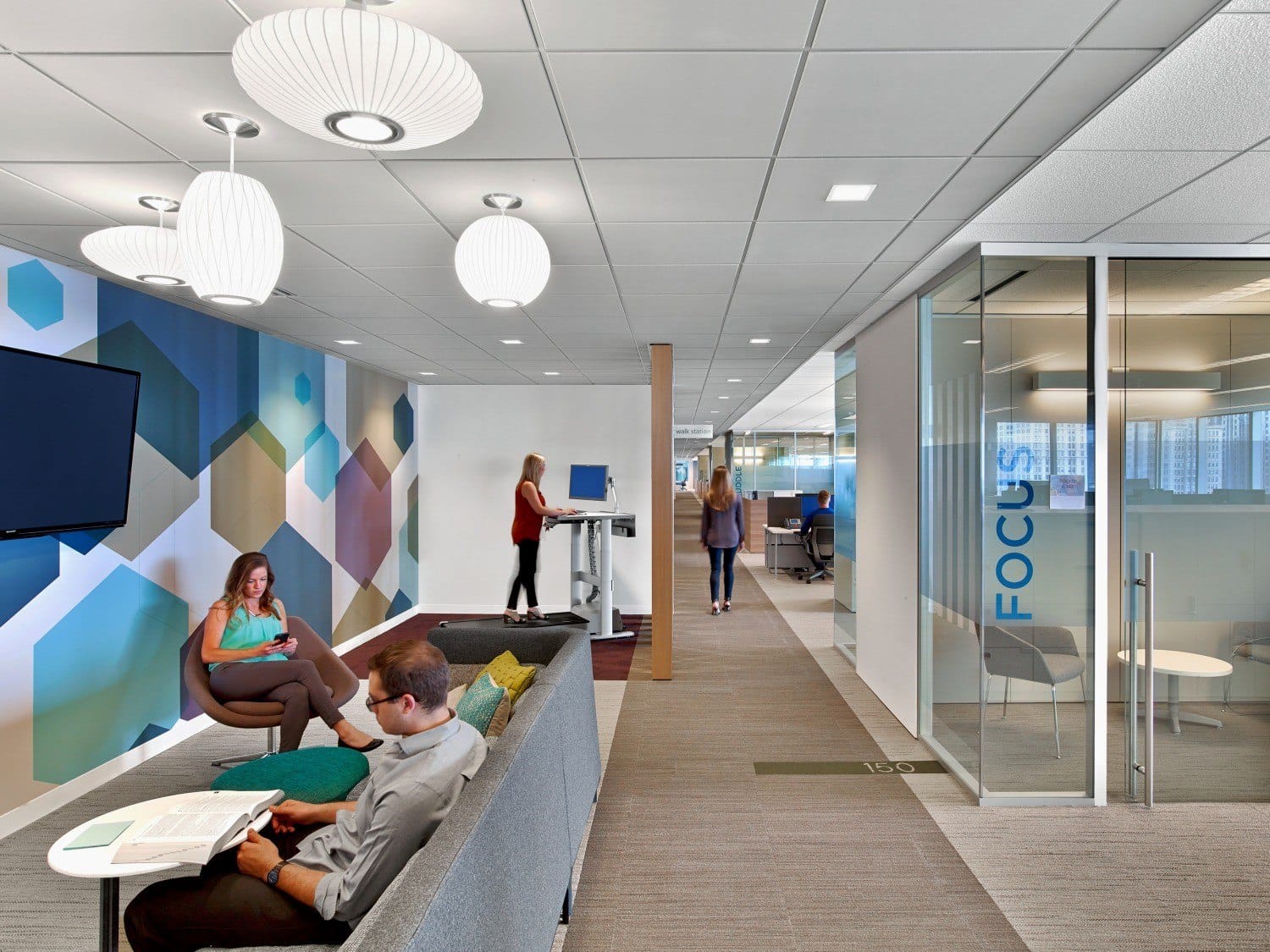
Confidential client.
Providing Respite
As the effects of increased screen time become better understood, it is incumbent on designers to take the initiative and lead the way toward a healthier and happier workplace. A common recommendation to help reduce eye strain is the 20-20-20 rule. Though a simple solution, remembering to actually follow the rule throughout the day often proves to be the trickiest part. Instead of just tackling eye strain, why not provide respite for the eyes and encourage a less sedentary work day? Building upon traditional 2-D graphics, a simple low-tech installation can provide just the right amount of motivation for a person to leave their desk during the day or at least encourage them to take a more scenic route.
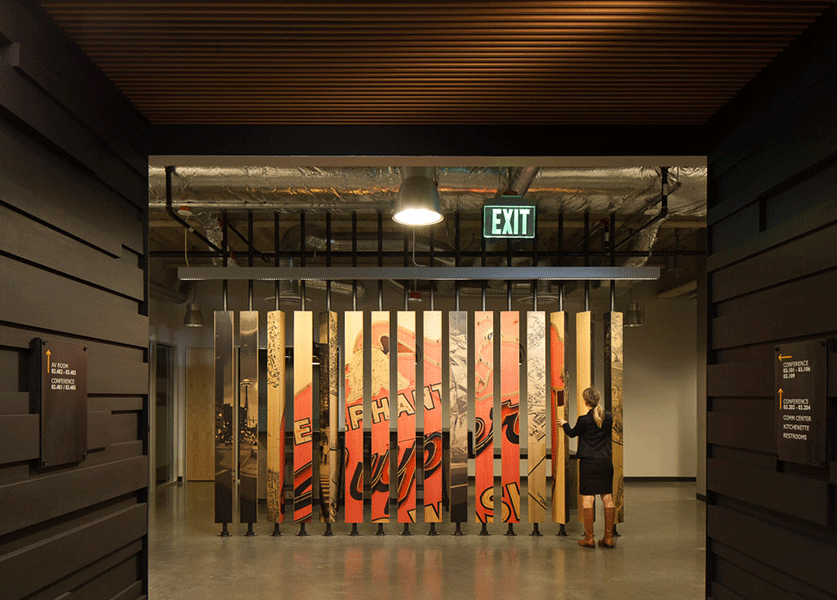
Photos © Andrew Buchanan/Subtle Light Photography.
IMPROMPTU INTERACTION
While employee health is of utmost concern, maintaining a strong company culture is just as important. When the physical and mental well-being of employees is properly looked after, thoughts can easily shift to growing a vibrant company culture. By providing the proper framework for employees to participate/contribute, brand culture and pride can grow in an organic and authentic manner.
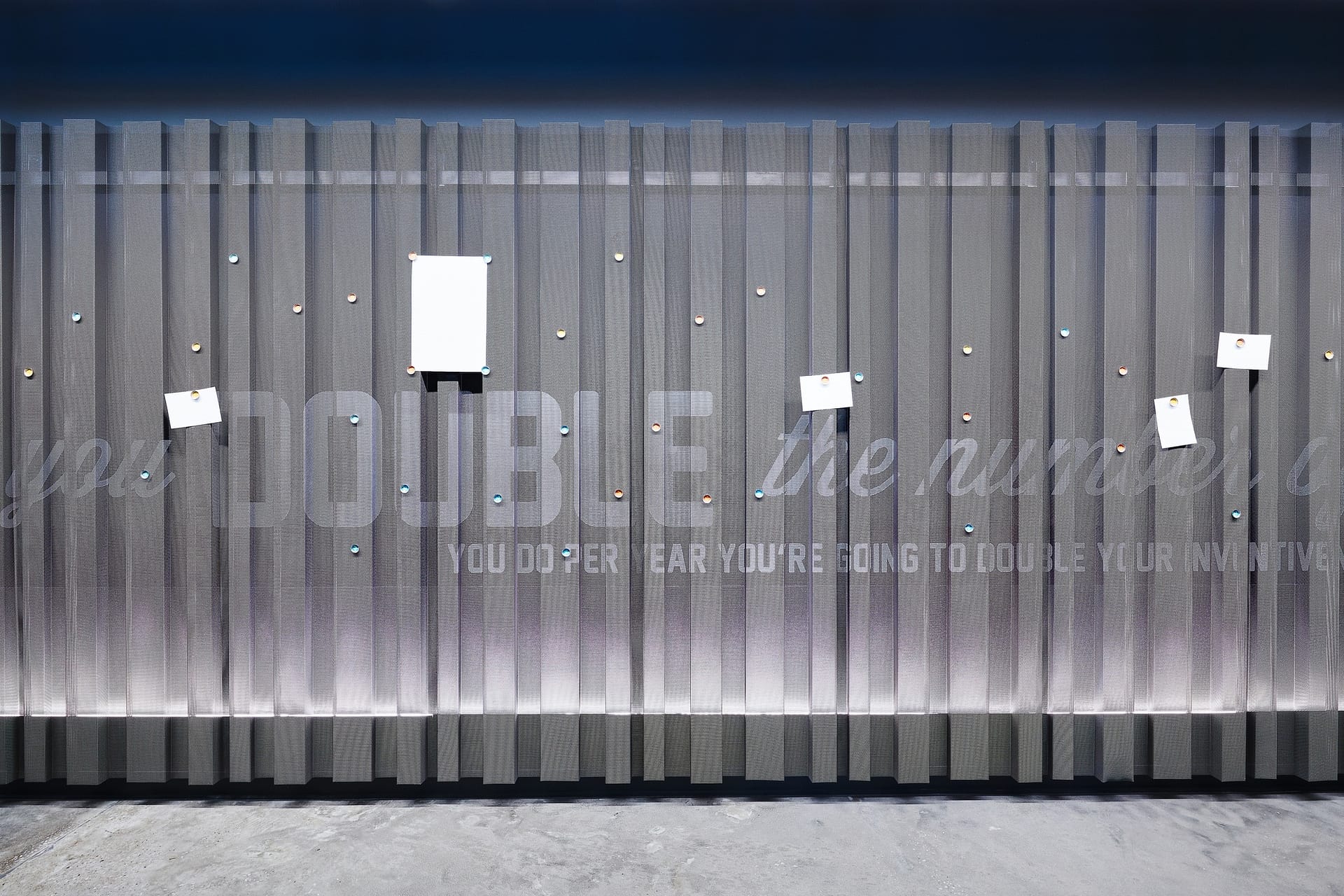
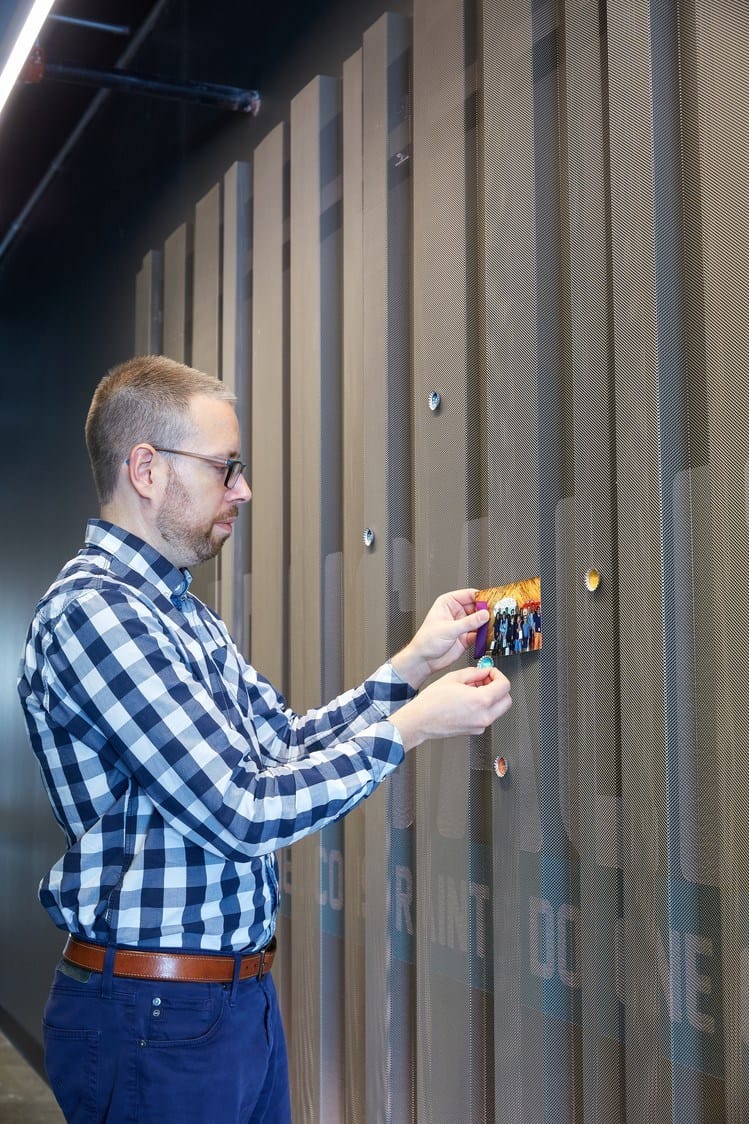
Just as there is no single design solution for the workplace, there is no single EGD solution for promoting workplace wellness. Luckily, EGD solutions are varied and versatile enough to reflect unique brand personalities and wellness goals. From 2-D graphics to low-tech interactive installations to full-blown digital feature, the options are almost inexhaustible for enticing employees away from a dull and sedentary work day. And, oh, so much fun.
